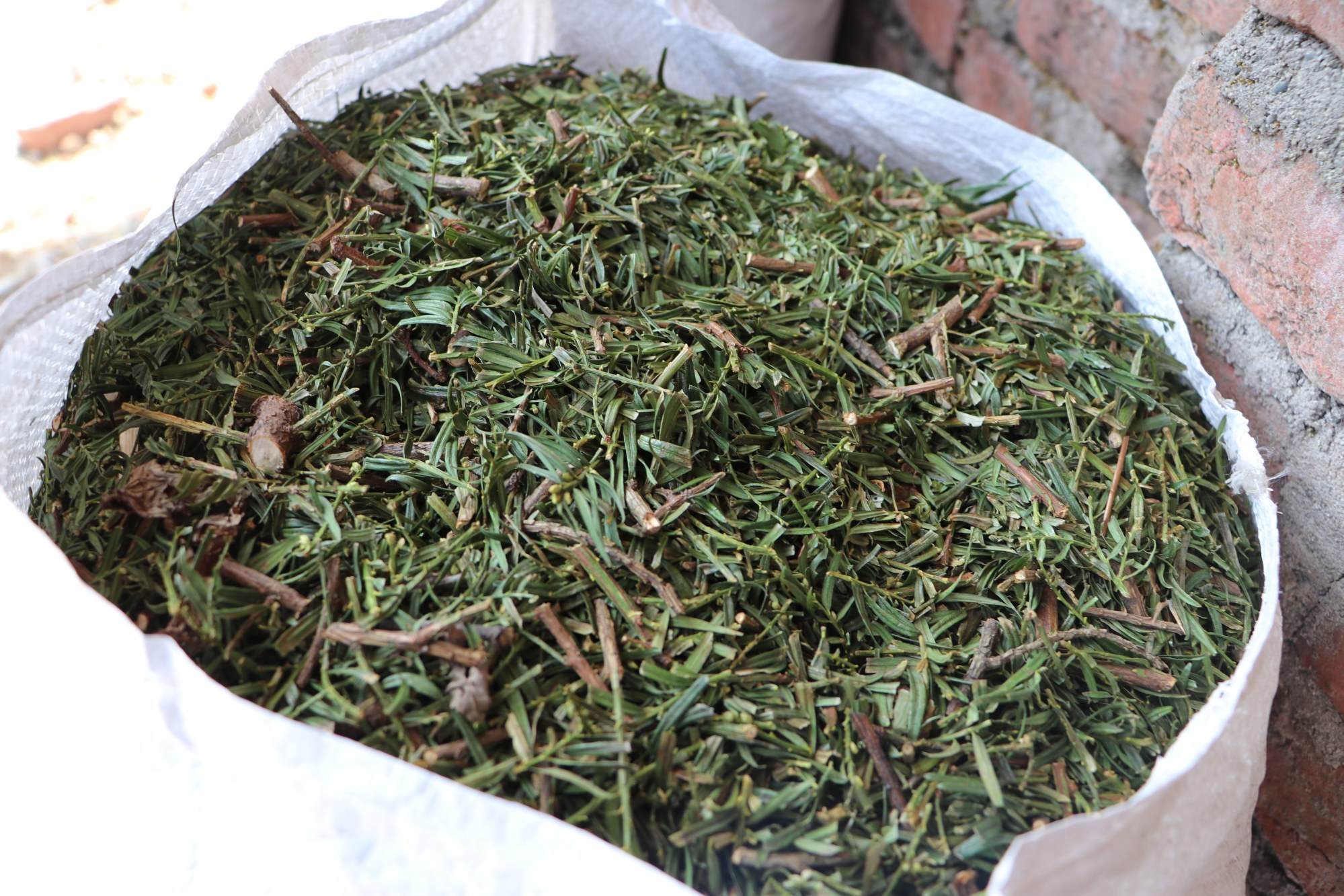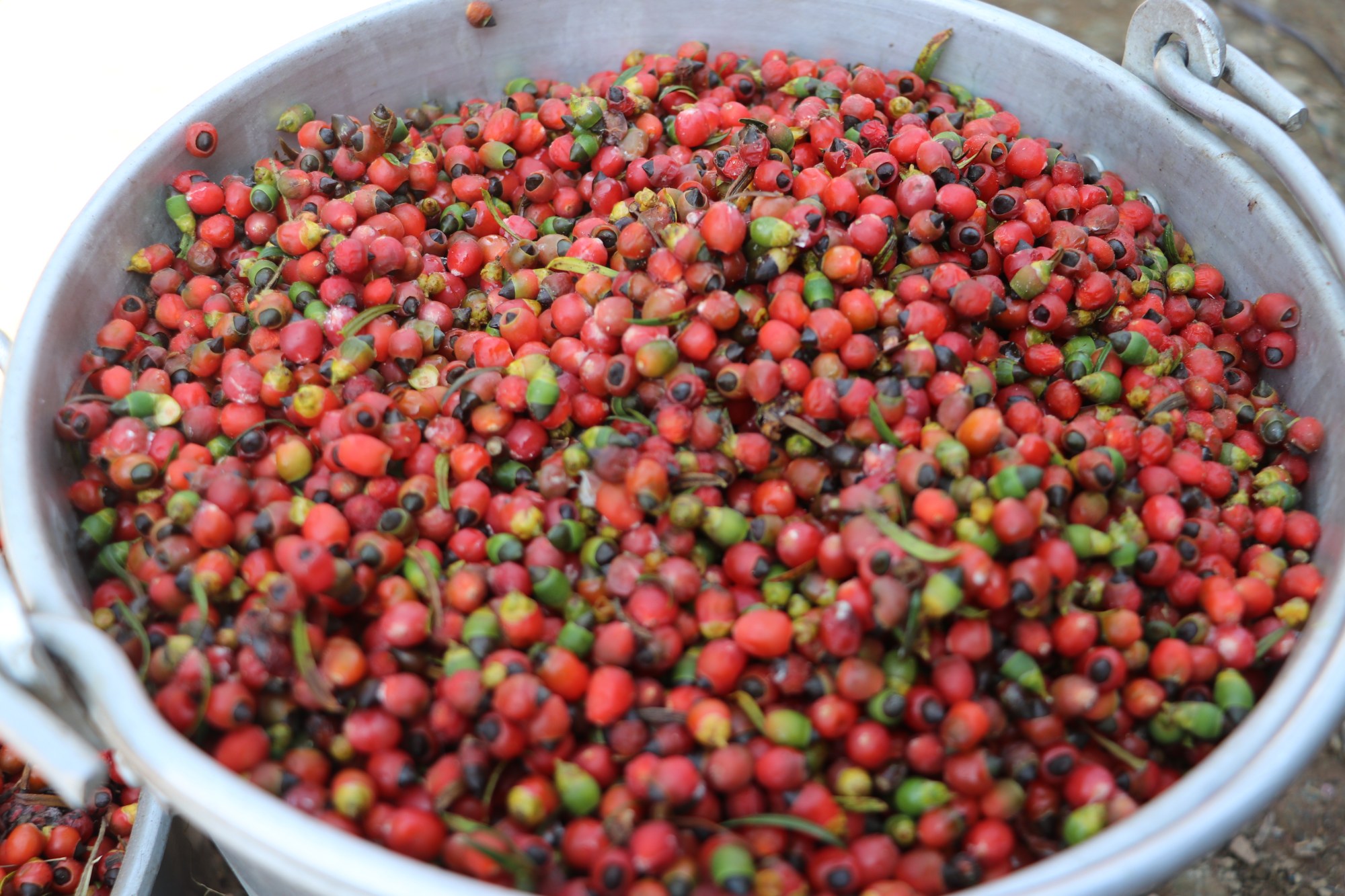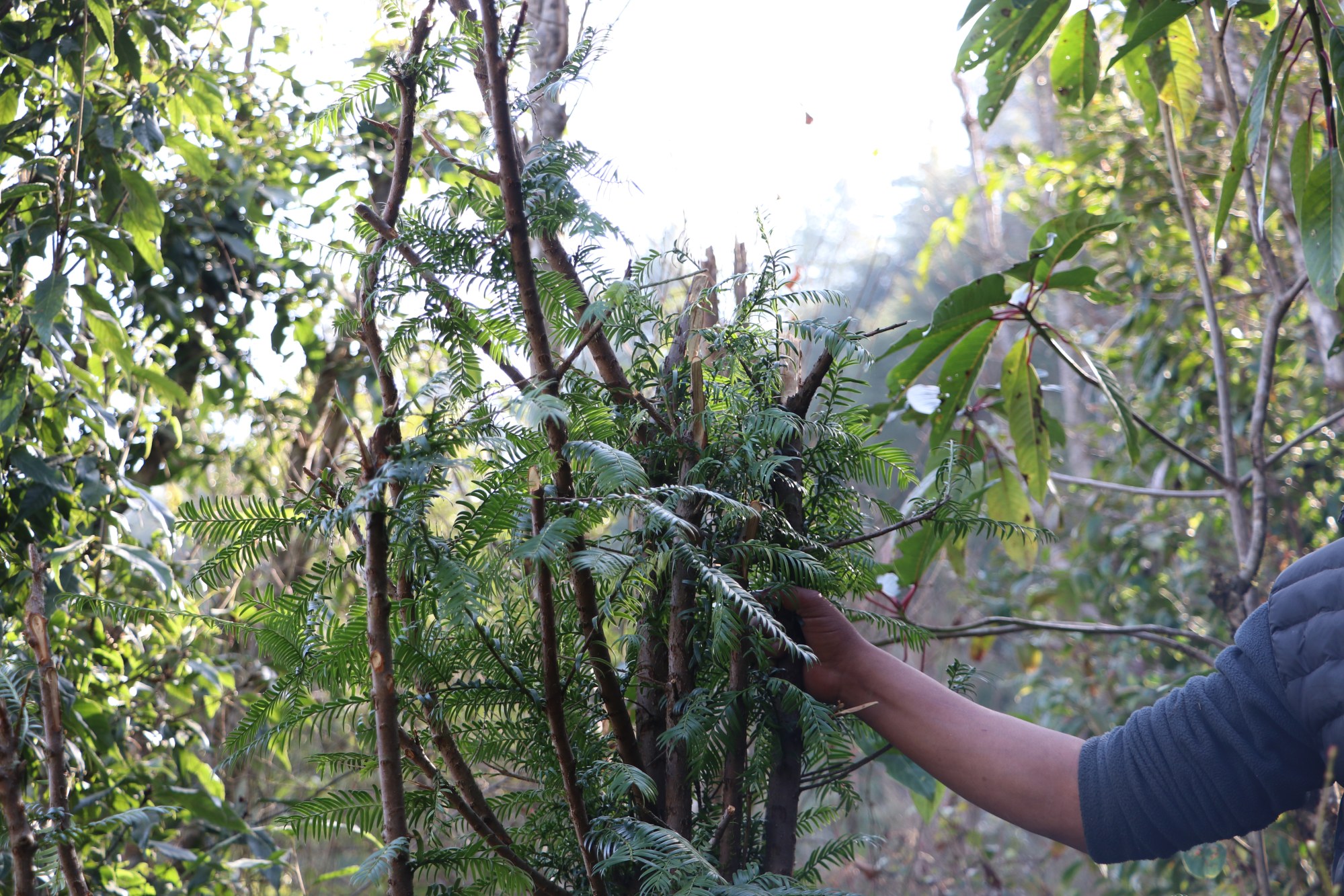Nepal villagers step up efforts to save cancer-treating yew trees, but challenges remain
[ad_1]
About three decades ago, Jeevan Timilsina’s father planted a few yew trees in their backyard. His grandfather used the leaves to treat common ailments such as fever and stomach aches, and applied them on cuts. Years later, the family expanded the plantation after finding out from local researchers that the trees contained high-value cancer-treating properties.
Today, Timilsina’s 10 acres of land in Gotikhel, on the outskirts of Nepal’s capital of Kathmandu, has around 15,000 Maire’s yew trees. He said most of the 300 households in his village had planted their own trees and were now reaping the benefits of the species, which were once overexploited and on the verge of extinction in the country.
“It’s one of the main sources of income in our village,” Timilsina said. “Before, when we farmed crops, the produce and the money we made off them would only last for a few months. But the income from harvesting yew trees sustainably is more stable.”

Yew is the common name given to 13 species of coniferous trees and shrubs found in several countries across the Northern Hemisphere. Nepal is home to three species of yew, including Maire’s yew, which is classified as vulnerable globally by the International Union for Conservation of Nature and is critically endangered in Nepal.
Most yew species contain a compound called taxol, which is used to treat various types of cancer, including those that affect breasts and lungs. Research shows that the agent, extracted from the trees’ leaves, bark and trunks, can block the growth of cancer cells.
Conservationists in Nepal said this resulted in the “haphazard exploitation” of yew trees as pharmaceutical firms rushed to extract taxol from them, particularly from Maire’s yew due to their relatively high content. However, this was largely contained after the country enacted legislation to implement the Convention on International Trade in Endangered Species of Wild Fauna and Flora (CITES) in 2017.
The government, however, has not yet announced a national plan on proper harvesting measures to ensure that yew trees are not overharvested or exploited.

“There is no specific law or guidelines from the government on harvesting yew,” said Kumar Paudel, founder of Greenhood Nepal, an environmental non-profit.
The NGO is formulating draft harvesting guidelines that it hopes the government will endorse. “The population of Maire’s yew is growing on private land, but it has not yet increased in the wild,” Paudel said.
A 2018 population survey of Maire’s yew conducted by Greenhood Nepal, led by Paudel and researcher Reshu Bashyal, showed there were only 2,231 of them in the wild, including saplings, poles and trees. Most were found in Sindhuli, Makwanpur and Kavrepalanchok districts, though researchers later found them in other areas, including Lalitpur and Kathmandu districts.
In the past decade, many community forest user groups have also stepped in to help increase the population of Maire’s yew. Around one-third of Nepal’s forests are managed by community groups, which collect wood and harvest from the area with the approval of local authorities, and have short and long-term operational plans to guide their plantation.

In Kavrepalanchok district, a few hours away from Kathmandu, the Patne Bhanjyang community forest group started conserving and planting Maire’s yew after locals realised the importance of the species when businesses were massively harvesting them some 30 years ago, according to community forest chairman Gopal Timalsina.
Timalsina added that local representatives in Kavrepalanchok designated a Maire’s yew “pocket area” for conservation about 12 years ago. The community forest has since added more Maire’s yew trees – which take about five to seven years to grow and harvest – and is expecting its first harvest sometime next year.
But while commercial farming has helped increase the overall population of Maire’s yew, conservationists say an absence of proper harvesting guidance has led to “a lack of clarity” among many community members on the need to protect the wild yew population.
“From a conservation perspective, we cannot count what’s in someone’s private farms,” Paudel said. “We need to ensure they’re thriving in their historic distribution range and assess their wild population.”

Theer Prasad Koirala, district forest officer in Gotikhel, agreed. While the number of Maire’s yew plantations in the area had expanded from five to some three dozen community forests over the past decade, he said most people were more keen on planting Maire’s yew on a mass scale on private lands for commercial benefits.
“This has somewhat sidelined the plantation and conservation efforts in community forests, which are common property,” Koirala said.
Gotikhel resident Timilsina noted that many commercial farmers were cooperating with community forest groups by providing yew seedlings and saplings to expand coverage. And while he acknowledged the need to gradually increase the Maire’s yew population in the wild, the financial gains from private plantations have led to many focusing more on their farms.
Timilsina said dried Maire’s yew leaves could fetch up to 250 rupees (US$1.80) per kilogram – they were sold for about 30 rupees per kg in 2002 – and he estimated that commercial farmers in his village collectively make between 40 million and 50 million rupees every year.

Prakash Poudel, a botanist and researcher of threatened species, said about one-third of yew leaves and barks could be sustainably harvested annually. Despite the growth in commercial farming and awareness, he said many people were still illegally stripping Maire’s yew trees in community forests, although on a smaller scale than before. Those caught doing so could be jailed and fined.
“People are carefully harvesting what they’ve planted on private lands,” Poudel said. “But there is still rampant harvesting in the wild because there is still lack of ownership. And this leads to the threat of trees dying.”
Paudel from Greenhood Nepal believes that proper harvesting guidelines will help regulate such issues, facilitate the creation of new policies and raise public awareness to ensure the long-term survival of yew trees in the wild.
“Yew trees are economically beneficial to Nepal,” he said. “It is not a myth-based market like other wildlife species, but a proven market driven by science. So we need to protect it and think of ways to use it sustainably.”
[ad_2]
Source link


 Casino Welcome Bonus
Casino Welcome Bonus